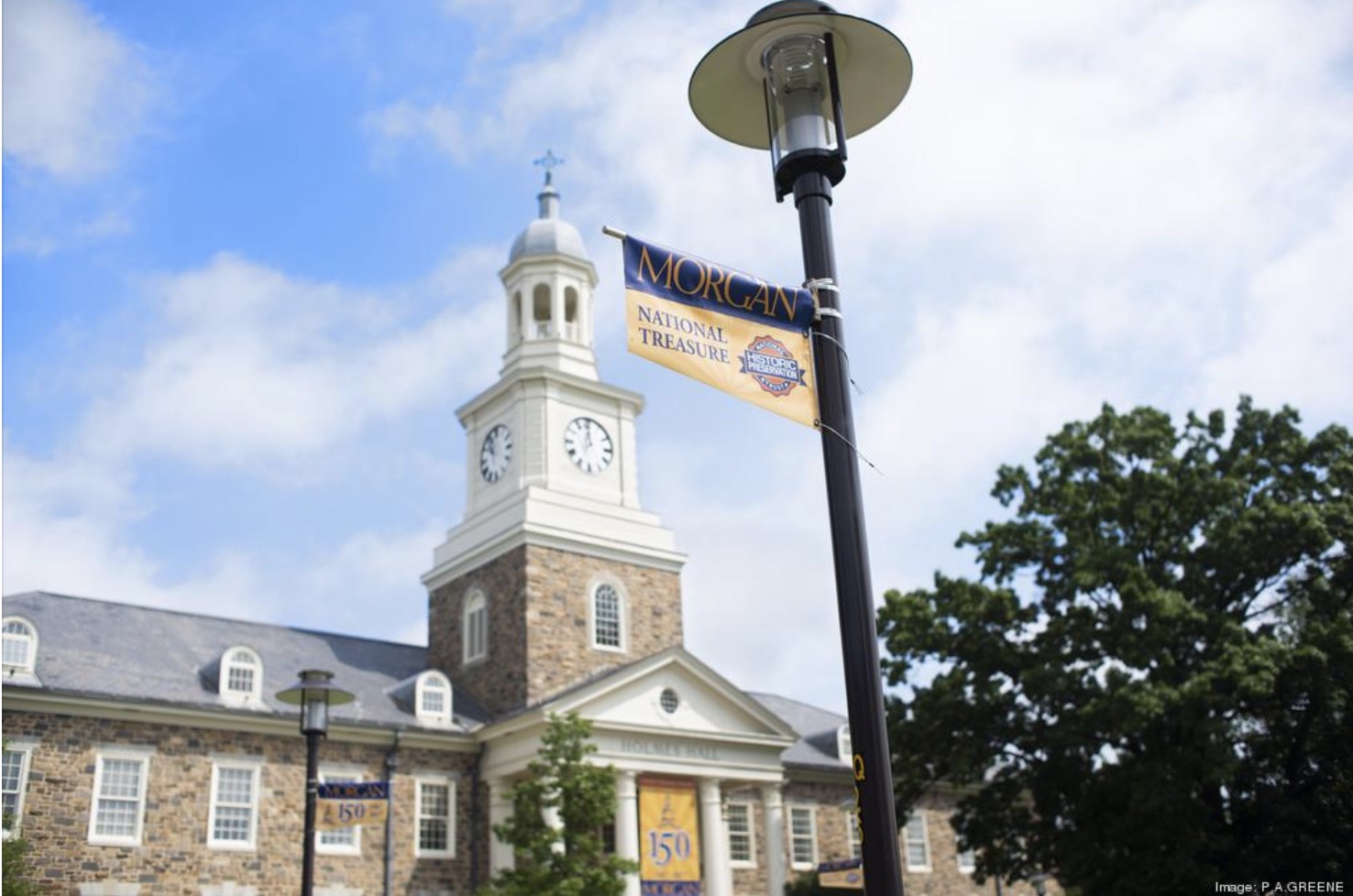Courtesy of Morgan State University
Researchers at Morgan State University’s Patuxent Environmental and Aquatic Research Laboratory (PEARL) have active research programs that are improving Maryland’s aquaculture’s vitality and its urban coastlines’ sustainability. Toward those ends, Maryland Sea Grant (MDSG) has awarded two research grants to Morgan, amounting to more than $600,000. The grants support PEARL’s work to advance the growth of soft-shell clam aquaculture in Maryland and promote the equitable distribution of health and climate resilience benefits by creating “blue spaces” along underserved, coast-adjacent South Baltimore communities.
“These two new projects truly exemplify the breadth of PEARL research. PEARL has diverse expertise across the natural and social sciences, and this expertise is applied to help address a wide range of societal challenges, from a lack of product diversification facing shellfish farmers in rural coastal counties to environmental disparities facing underserved communities in urban Baltimore,” said Scott Knoche, Ph.D., director of PEARL.
The grants awarded to PEARL are part of $1.25 million in MDSG-administered federal funding from the National Oceanic and Atmospheric Administration (NOAA). The investment supports five vital research projects addressing water quality restoration tools, algal bloom monitoring, urban community access to coastal spaces, and living shorelines. The research projects were selected through a rigorous, competitive, peer-reviewed process through which grants were awarded to several Maryland colleges and universities, including two to Morgan.
One of the grants is supporting the work of PEARL’s Environmental Economics team, which plays a central role in the Baltimore BLUE-CORE: BLUEspace COllaborative REsearch for Urban Coastal Access and Climate Resilience in South Baltimore Project. BLUE-CORE is a multidisciplinary effort investigating how the creation of “blue spaces” beneficially impacts health and climate resilience in under-resourced, water-bordering Baltimore neighborhoods that are not home to international commerce, maritime activities and waterfront retail businesses. Dr. Knoche and Kehinde Ojo, Ph.D., a postdoctoral research associate at PEARL, serve as principal investigators for the project.
Supported by Samia Kirchner, Ph.D., associate professor of Urban Design at Morgan; Mark Barnes, Ph.D., Morgan associate professor of Geography; and Lisa Wainger, Ph.D., a research professor from the University of Maryland Center for Environmental Science, the BLUE-CORE initiative will work directly with Baltimore communities to strategically reimagine, repurpose and ultimately redevelop key areas along Baltimore City’s 61-mile coastline, with significant attention placed on South Baltimore neighborhoods such as Brooklyn, Brooklyn Park, Cherry Hill and Curtis Bay. The residents of these neighborhoods have limited access to the City’s coastal waterfront and the physical, mental health and climate resilience benefits that “blue spaces” offer. The collaborative, multidisciplinary project aims to develop and enhance stakeholder relationships, producing collaborative research that will ultimately foster the design and placement of blue spaces and increase access to outdoor spaces in general.
“Exploring the preferences for Baltimore City’s coastal green spaces and addressing access disparities is at the heart of my work,” said Dr. Ojo. “I’m excited about this new research that will harness collaborative efforts to improve waterfront access, driving equitable health and climate resilience benefits for the community.”
The second MSG research award will underwrite two years of examination and advancement of soft-shell clam vitality by PEARL, supporting efforts to overcome a myriad of challenges faced by the shellfish (known scientifically as Mya arenaria and more commonly as “steamers”) within the Chesapeake Bay and its adjoining estuaries.
Maryland’s shellfish industry has been dominated by the Eastern Oyster (Crassostrea virginica), but the once-thriving soft-shell clam fishery in the Chesapeake Bay has experienced a significant decline caused by pathogens, parasites and rising sea temperatures.
In recognition of this downturn and the need to diversify the Bay’s aquatic life, PEARL researchers have been dedicated to breeding soft-shell clams and developing sustainable methods to steward a more vital, thriving aquaculture. The new project aims to tackle the critical issue of summertime heat-induced mortality by identifying optimal growing periods and breeding resilient clam lines. Healthy shellfish populations can be a factor in maintaining healthy finfish populations in coastal waters, by removing excess nitrogen from the environment.
In recognition of this downturn and the need to diversify Maryland’s aquaculture industry, PEARL researchers have been dedicated to breeding and growing soft-shell clams. The new project aims to tackle the critical issue of summertime heat-induced mortality by identifying optimal growing periods and breeding resilient clam lines. Shellfish aquaculture can be a factor in maintaining healthy coastal ecosystems by filtering excess nutrients from the environment.
The project’s goal is to enable clams to reach market size within 10–11 months, thereby enhancing commercial viability and expanding Maryland’s shellfish aquaculture industry. PEARL researchers Ming Liu, Ph.D., Shellfish Hatchery Manager Brittany Wolfe-Bryant, Facility Manager Jon Farrington, Amanda Knobloch, Ph.D., and Dr. Knoche are among the investigators on the soft-shell clam project.
Dr. Liu added, “In a previous Maryland Sea Grant project, PEARL achieved significant milestones related to soft-shell clam breeding and grow-out methods. This new project will leverage past successes and focus on selective breeding, with the end result being novel lines of heat-tolerant soft-shell clam that will further enhance crop yield.”
PEARL is located 80 miles south of Morgan’s main campus on the Patuxent River shoreline, a major Chesapeake Bay tributary. Its research is designed to increase the understanding of coastal and environmental systems so that they can be properly managed and protected.

